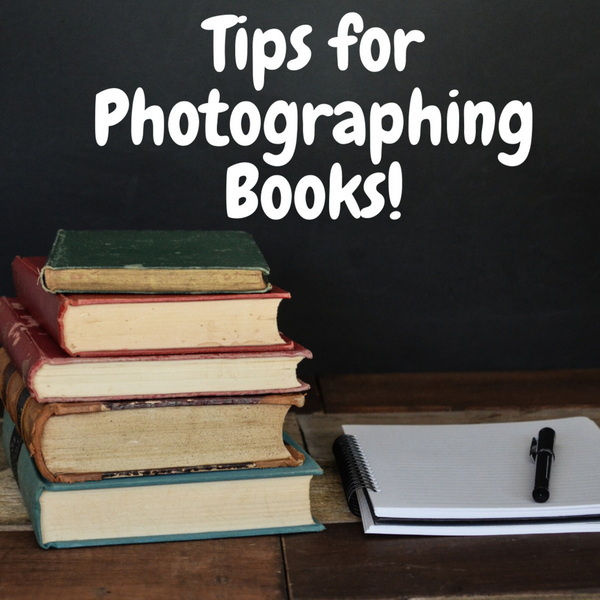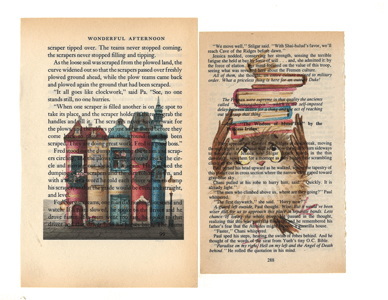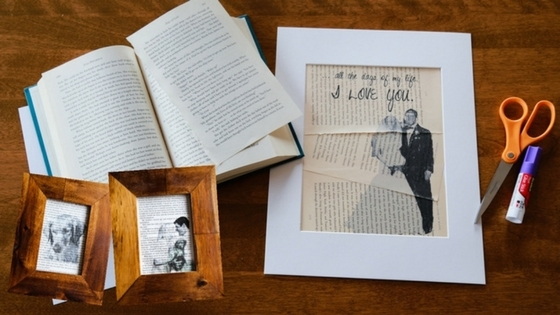Content Menu
● Preparing Your Setup
>> Equipment Needed
>> Choosing the Right Location
● Setting Up the Book
>> Keeping Pages Open
>> Positioning the Book
● Lighting Techniques
>> Natural Light
>> Artificial Lighting
● Camera Settings
>> Focus and Exposure
>> Shooting Mode
● Taking the Photos
>> Capture Each Page
>> Avoiding Blurriness
● Post-Processing Your Images
>> Editing Software
● Organizing Your Photos
>> File Naming and Storage
>> Advanced Techniques for Better Results
>> Using Props Effectively
>> Experimenting with Angles and Composition
● Tips for Specific Types of Books
>> Photographing Glossy Books
>> Photographing Thick Books
● Final Touches Before Sharing Your Work
>> Quality Check
>> Consider Your Audience
● Conclusion
● Frequently Asked Questions
>> 1. What type of camera is best for photographing book pages?
>> 2. How do I keep my book open without damaging it?
>> 3. What lighting conditions are best for photographing books?
>> 4. Should I use flash when photographing books?
>> 5. How can I improve my photos during post-processing?
● Citations:
Taking high-quality photographs of book pages can be a challenging yet rewarding task. Whether you are an author looking to showcase your work, a student needing to digitize notes, or a book lover wanting to preserve memories, understanding the right techniques can significantly enhance the quality of your images. This comprehensive guide will explore various methods and tips for photographing book pages effectively.

Preparing Your Setup
Before diving into the actual photography, it's crucial to prepare your setup properly. This involves selecting the right equipment and creating an optimal environment for capturing clear images.
Equipment Needed
- Camera: A DSLR or mirrorless camera is ideal, but a high-quality smartphone camera can also work.
- Tripod: A sturdy tripod helps stabilize your camera and avoid blurriness due to shaky hands.
- Lighting: Natural light is preferable, but if unavailable, consider using softbox lights or LED panels to create even illumination.
- Anti-Glare Acrylic Sheet: This can help keep pages flat while reducing reflections when photographing glossy pages.
Choosing the Right Location
Select a location with ample natural light. A table near a window is often ideal. If using artificial lighting, ensure that it is diffused to avoid harsh shadows and reflections.
Setting Up the Book
The way you position the book is critical for achieving the best results.
Keeping Pages Open
To keep pages open without damaging the book:
- Use a piece of heavy, non-glare glass placed on top of the open book to hold it flat.
- Alternatively, consider using a book holder or display stand that can support the pages without creasing them.
Positioning the Book
Place the book on a solid-colored surface to minimize distractions in the background. Ensure that it is centered under the camera lens and adjust the angle if necessary to capture both pages clearly.
Lighting Techniques
Lighting plays a crucial role in photography, especially when dealing with reflective surfaces like glossy pages.
Natural Light
Utilize soft, natural light by positioning your setup near a window during daylight hours. Avoid direct sunlight as it can create harsh shadows and glare.
Artificial Lighting
If using artificial lights:
- Position two light sources at 45-degree angles from the book to create even lighting across both pages.
- Use diffusers (like white sheets or softboxes) to soften the light and reduce reflections.
Camera Settings
Adjusting your camera settings appropriately can make a significant difference in image quality.
Focus and Exposure
- Use manual focus to ensure sharpness on the text.
- Set a low ISO (100-200) for less noise and better quality images.
- Adjust aperture (f-stop) settings; f/8 to f/11 is usually ideal for depth of field while keeping both pages in focus.
Shooting Mode
Use continuous shooting mode if available, allowing you to take multiple shots quickly as you turn pages.
Taking the Photos
With everything set up correctly, it's time to start photographing.
Capture Each Page
Take multiple shots of each page to ensure you have options to choose from later. Review each image on your camera's display for clarity before moving on.
Avoiding Blurriness
To avoid motion blur:
- Use a remote shutter release or set a timer on your camera.
- Ensure that you are not touching the camera when taking photos; this helps maintain stability.

Post-Processing Your Images
Once you've captured your images, some post-processing may be required to enhance them further.
Editing Software
Use software like Adobe Lightroom or Photoshop for editing:
- Adjust brightness and contrast to improve visibility.
- Crop out unnecessary background elements.
- Correct any color imbalances caused by lighting conditions.
Organizing Your Photos
After editing, organize your photos for easy access later on.
File Naming and Storage
Use descriptive file names that indicate content (e.g., "BookTitle_Page1.jpg"). Store images in folders categorized by title or subject for easy retrieval.
Advanced Techniques for Better Results
Once you have mastered basic techniques, consider exploring advanced methods that can elevate your photography skills further.
Using Props Effectively
Incorporating props can add context and interest to your photographs:
- Consider using items like bookmarks, plants, or stationery that complement the theme of the book.
- Ensure props do not distract from the main subject—the book itself—by choosing neutral colors or simple designs that enhance rather than overpower.
Experimenting with Angles and Composition
Varying your angles can lead to more dynamic images:
- Shoot from above (flat lay) for an organized look.
- Capture side views that highlight textures or details such as spine stitching.
- Use close-ups for intricate illustrations or typography that may be lost in wider shots.
Tips for Specific Types of Books
Different types of books may require unique approaches:
Photographing Glossy Books
Glossy covers can create reflections that obscure details:
- Use an anti-glare acrylic sheet over glossy pages.
- Adjust lighting angles until reflections are minimized while maintaining clarity of text and images beneath.
Photographing Thick Books
Thick books may resist staying open:
- Choose middle pages where pressure is evenly distributed across both sides.
- Consider photographing sections separately if necessary, ensuring overlap between images for seamless stitching during editing if needed.
Final Touches Before Sharing Your Work
Before sharing your photographs online or using them in presentations:
Quality Check
Review all images for consistency in lighting, focus, and composition before finalizing selections for sharing or printing.
Consider Your Audience
Tailor your images based on where they will be displayed—social media posts may require different styles compared to professional presentations or e-commerce listings.
Conclusion
Photographing book pages requires careful planning and attention to detail. By following these steps—preparing your setup, managing lighting effectively, adjusting camera settings appropriately, capturing multiple images, performing post-processing, and considering advanced techniques—you can achieve high-quality photographs that do justice to your books.
This guide has covered essential techniques for photographing book pages effectively, ensuring clarity and quality in every shot taken while also providing insights into advanced methods that can enhance visual storytelling through photography.

Frequently Asked Questions
1. What type of camera is best for photographing book pages?
A DSLR or mirrorless camera is ideal due to their superior image quality and manual settings capabilities; however, high-end smartphone cameras can also suffice for casual photography.
2. How do I keep my book open without damaging it?
Using heavy glass or a specialized book holder can help keep pages flat without causing damage.
3. What lighting conditions are best for photographing books?
Natural light is preferred; however, if using artificial lights, ensure they are diffused to prevent harsh shadows and glare.
4. Should I use flash when photographing books?
It is generally advisable to avoid flash as it can create unwanted reflections and harsh lighting effects on glossy surfaces.
5. How can I improve my photos during post-processing?
Using editing software like Lightroom or Photoshop allows you to adjust brightness, contrast, crop unnecessary elements, and correct color imbalances for better final images.
Citations:
[1] https://www.youtube.com/watch?v=ElyzeEYmzyc
[2] https://authornews.penguinrandomhouse.com/how-to-take-a-great-book-photo-for-social-media/
[3] https://www.youtube.com/watch?v=kUJi7l_7RmI
[4] https://pictours.ie/best-techniques-to-take-pictures-of-books/
[5] https://www.belindajiao.com/blog/photographing-books-techniques-styles
[6] https://www.reddit.com/r/AskPhotography/comments/170ldtr/does_anyone_have_lighting_tips_on_shooting_books/
[7] https://www.iphotography.com/blog/photographing-books/
[8] https://images.pangobooks.com/blog_images%2Famy523115.jpg?format=auto&width=800&sa=X&ved=2ahUKEwjm-O-mncCKAxUev4kEHWuTM9QQ_B16BAgKEAI
[9] https://vintagepagedesigns.com/photographing-handmade-books/
[10] https://pangobooks.com/blog/5-tips-for-excellent-book-photography
































